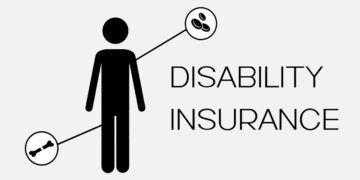Like the rest of us, you probably looked at your calendar this morning and realized that 2023 is now on the downslope. Have you made progress on the aspirational financial goals you set on New Year’s Day? Chances are, 2023’s demands on your finances have been as daunting as they were in 2023.
If you’ve fallen behind on your goals and want to get back on track come December, you’re not alone. Prioritize your financial self-care by implementing these four tips. Your 2023 self you will be forever grateful.
1. Find Out Where You Stand

No matter your preferred payment method, you’ve got to step back and track your balances and obligations. Users of online financial aggregators can easily get an at-a-glance view of their accounts. Others will need to log on to their profiles individually and create a spreadsheet to take stock.
When you export your transaction histories, many providers will suggest spending categories for you, such as restaurants, gas, and groceries. Review the suggested labels and try to keep things simple. The more categories you have, the harder it will be to analyze your spending. Retain all transaction dates to make it easy to identify spending spikes due to holidays, vacations, or other life events.
Make sure you’re not just reviewing your spending, but also your savings. According to Chime, things like your debit card can actually be a tool in your savings toolbox. Many debit cards give the option to automatically round-up purchases and then put the round-up into your savings account. By taking advantage of anything you can do to help make savings easier, you’ll be able to watch it grow quickly and easily.
In addition to your spending and savings accounts, take note of any loan balances and investment or retirement accounts. This will give you a full view of your financial outlook. Don’t forget about any work-provided investment or pension accounts. If you’ll have access to them in the future, they’re part of your financial picture.
2. Review Your Spending Habits

The most active part of your financial life is your daily spending. Subject to seasonal and emotional impact, your spending habits will determine where your money is going. Pull all of your transactions for the past year, then categorize and analyze them. This task may be painful, but it’s a worthwhile exercise. You may be surprised to learn that you’re spending more than you realized.
If you made a budget for 2023, see how your spending compares to what you had allotted for each category. Did food prices increase? Were you so burned out on cooking that you ordered delivery three times a week instead of the budgeted two? Don’t beat yourself up; just track what actually happened. You can always course-correct.
As you review your transactions, ask yourself why you bought those items and whether they met your needs. Were you tempted by social media to buy the newest beauty tools? Did you get inspired to tackle home improvements since you were home so often? Take notes as you conduct this exercise — you’ll need them for your next task.
3. Prioritize Essentials and Things That Bring You Joy

We can all agree that spending our hard-earned money on student loan payments and utility bills is less than fun. But what is fun is having clean water and avoiding calls from collection agencies! While you can’t avoid paying for life’s essentials, you can home in on spending opportunities that bring you joy.
The concept of focusing on joy in the home organization was popularized by author and organizer extraordinaire Marie Kondo. Kondo stresses that if something doesn’t bring you joy, get rid of it. The same principle can be applied to your finances.
Consider groceries. Are name brands really important to you? If they aren’t, you can easily do without them and save handsomely by purchasing store brands instead. If connecting with friends is paramount but you don’t enjoy dining out, host them at your place. Comb through your recent receipts, and you’ll start to reveal a lot about yourself. Get creative as you determine how to adjust your spending to align with what makes you happy.
The way we spend often reflects what we value. Where some may value quality, others may prefer convenience. Keep in mind how long it takes you to earn the amount of money you’re about to spend. If you aren’t willing to earn the price of an item, you don’t need it. Once you identify the spending that brings you joy, it’ll make your next step easier.
4. Make and Execute Your Plan

Now that you’ve dialed in your essential and discretionary spending, it’s time to recalibrate your budget and your goals. Determine what your savings targets are and be sure to keep them realistic.
Saving for the future and big purchases is good in theory, but don’t forget — life is short. Budget for spontaneity and fun as well. Have money set aside for tickets to a sought-after concert or your share of a cabin with friends. Planning in advance for the things that make life exciting allows you to focus on the event, not the bill.
Establish your savings and debt repayment goals accordingly. If you’ve got lingering credit card debt or student loans, include them in your plan. Consider whether making extra payments toward those is an option for you. If so, review their interest rates and terms and whether there are any early repayment penalties. Understanding the whole picture is essential.
While paying down your debt in 2023 is a worthy goal, you may not be able to tackle it all by year-end. Remember that you should be proud of the progress, too.
Once you’ve developed your plan, make an appointment with yourself to review where you are each week. If you already check over your calendar on Sunday night, add this review to that existing routine. This will be easier to stick to and can give you a clear financial picture of the week ahead.
Now that you know where you stand, it’s up to you to do the work. Remember, progress requires your dedication. While it can be overwhelming to think of the big goals you want to achieve, take it one day at a time. Habits are made by choosing to improve daily. Commit to yourself and to achieving your updated financial goals, and you’ll be set to succeed in 2023 and beyond.












